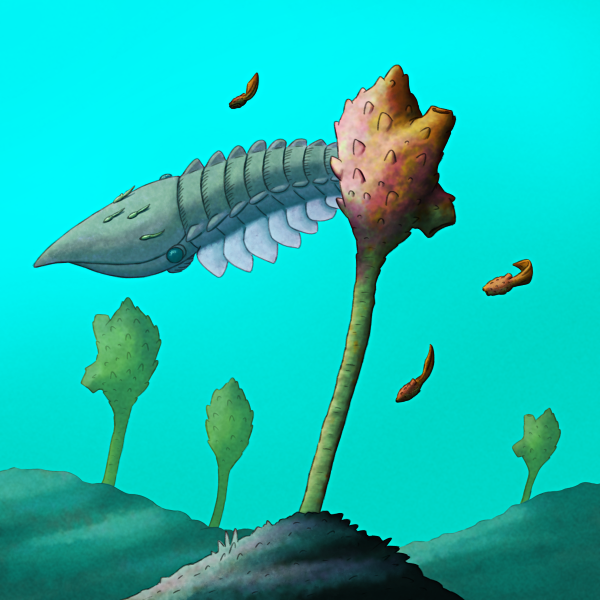As we come to the end of the month, here’s another #Spectember concept from an anonymous submission:

Ranulaviatrix dimorphoides is an early tunicate that lived during the mid-to-late-Cambrian period, around 500 million years ago. It grows to around 20cm (8″) in total length and looks superficially very similar to the modern sea tulip: a long-stalked, sessile, solitary tunicate that lives in warm shallow coastal waters, with a knobbly surface that’s often encrusted with a colorful symbiotic sponge.
…Except that form is only part of the story.
The stalked lumpy Ranulaviatrix is actually the adult male of this species, and in an extreme and bizarre example of sexual dimorphism the adult females are comparatively tiny neotenous tadpole-like creatures.
Both sexes start off as standard tadpole-like tunicate larvae, but while the males attach themselves to the seafloor after a few days and metamorphose, the females continue in a manner more reminiscent of their chordate relatives – retaining a free-swimming lifestyle and developing a single simple eye at the front of the body and a more complex brain-like cerebral ganglion.

Like the stationary males the swimming females are also filter-feeders, passing water currents in through a siphon below their eye and out through another siphon on their back, and on their underside the adhesive papillae of tunicate larvae have been modified into a suction cup. They opportunistically use this to cling onto much larger swimming animals like hurdiids in a similar commensal manner to modern remora fish, gaining protection from smaller predators and a free ride across much further distances than they could easily travel alone.
During spawning seasons female Ranulaviatrix swim into the outflow siphons of the much larger males and deposit their eggs directly into an internal brood pouch, where they’re fertilized and incubated until the larvae are developed enough to be released into the water column.
